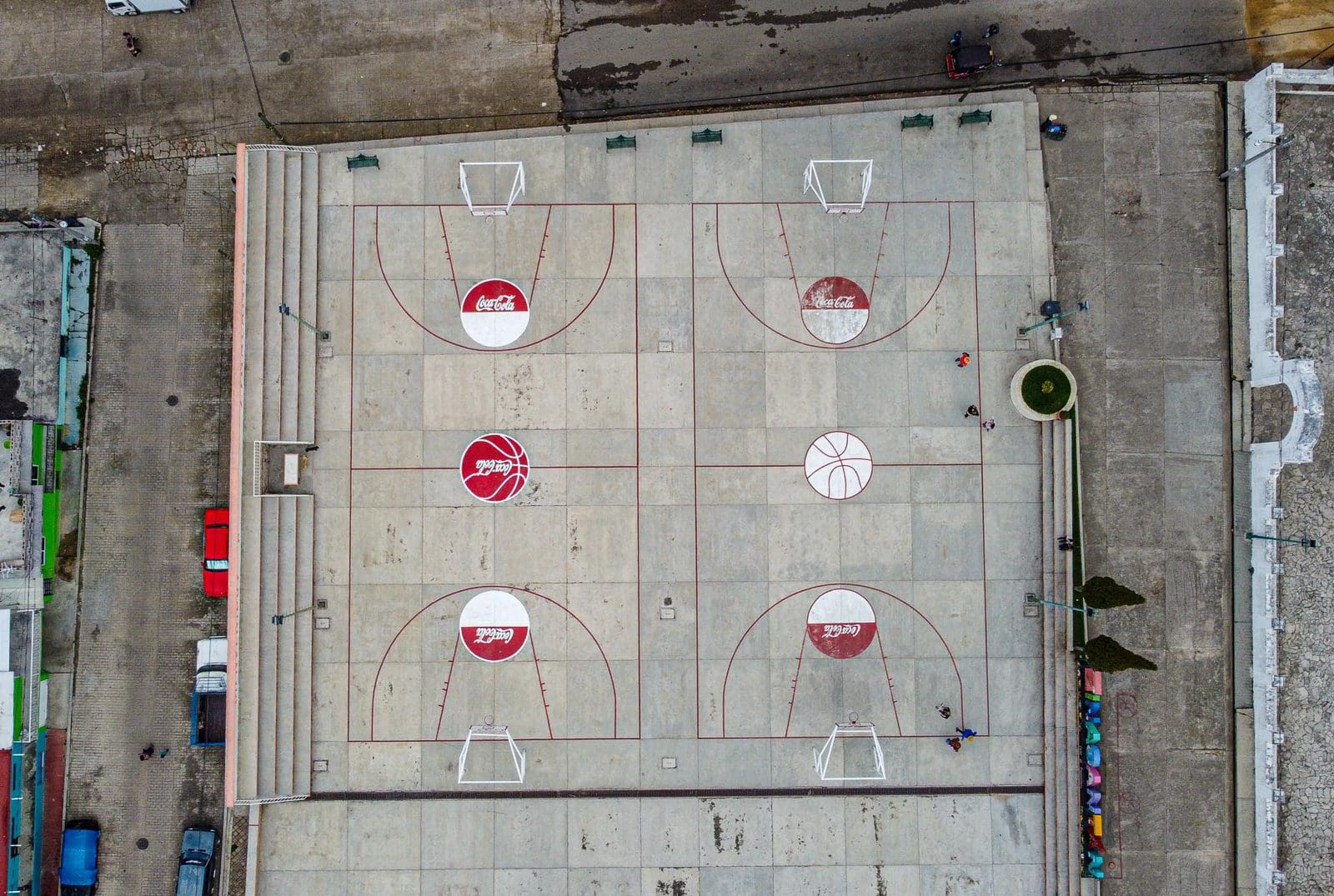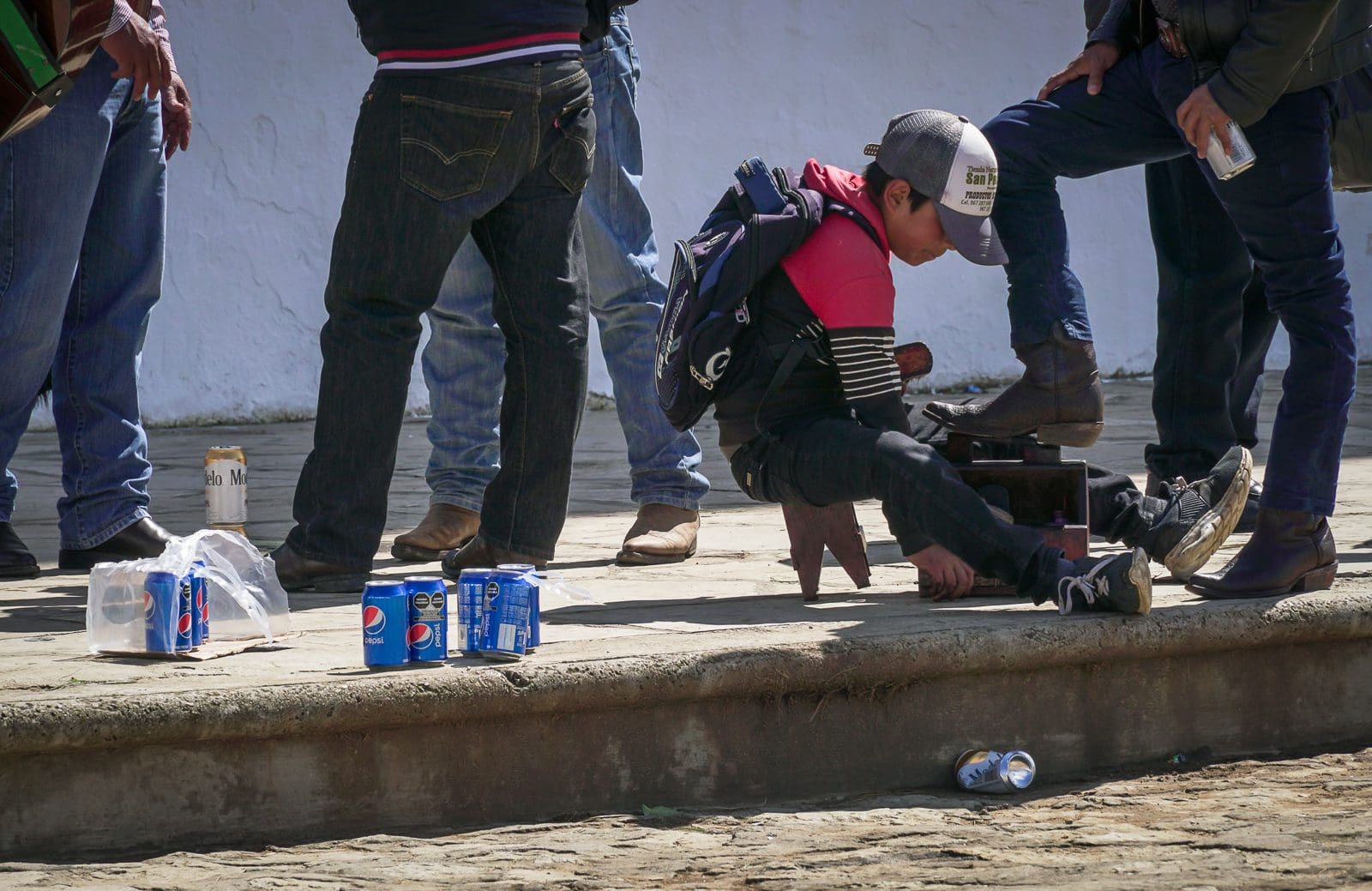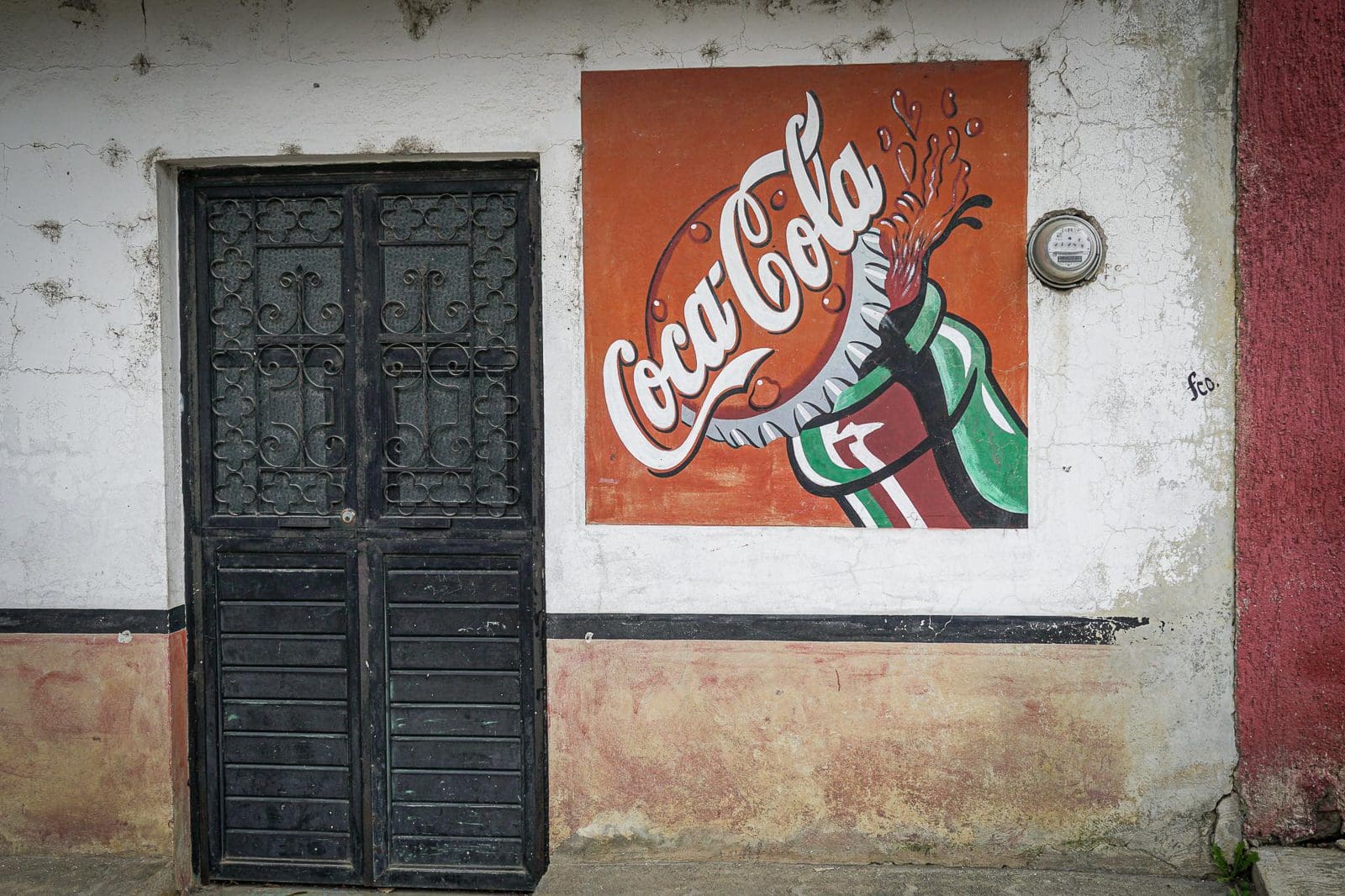Mexico and Clouds sang Enzo Jannacci in the 1970s.
Today clouds could be substituted for the word “bubbles,” using another famous title, this time from the 1980s. This is because, in the four months we spent here in Mexico, especially in Chiapas, we realised how high the consumption of sparkling and sugary drinks is in this part of the world.
In everyday life of people
We are in one of the most visited places in Chiapas, San Cristóbal de Las Casas, its former capital during colonial times. As we walk through the main streets of the city and the small towns surrounding it, one thing sticks in our minds like a cliché: the bright red and blue signs that decorate most of the shops, be they grocery shops or stalls. There are also small restaurants furnished entirely with the billboards of a famous brand, including chairs and tables. Here Mexicans meet up to eat delicious tacos and drink their favourite sparkling drink. It is difficult to see a customer drinking water. The situation is the same even on the street: people walk around with a small bottle of sparkling drinks in their hands. And more than once, we happened to notice entire families out for a stroll, carrying a two-litre bottle of refrescos (as fizzy drinks are called here) to quench their thirst on hot Mexican days.
According to a study by Jaime Tomás Page Pliego conducted in 2019 for the Centro de Investigaciones Multidisciplinarias sobre Chiapas y la Frontera Sur (CIMSUR), each Chiapas resident – including children – drinks an average of 683.8 litres of refrescos per year. The world average consumption of these drinks is 25 litres per year per person. The most consumed fizzy drink in this area is Coca-Cola. Several reasons underlie this phenomenon, including political choices, particularly aggressive marketing strategies-for example, building Coca-Cola-branded basketball courts for pueblos, the presence since the 1990s of a bottling plant just outside San Cristóbal de las Casas, the ease with which one can buy a bottle of Coca-Cola over one of water-drinking water is often not available in homes-and the extremely competitive price, as we saw in the small pueblo of Zinacantán by looking at the price chart hanging outside the grocery stores.


Inside the pueblo church
Coca-Cola has so penetrated the everyday life of local communities that it has become an integral part of many religious rituals and, consequently, of other social occasions. Among the indigenous communities dating back to the Maya Tzotzil of the picturesque pueblo of San Juan Chamula, a few kilometres from San Cristóbal de las Casas, there is a belief that ‘burping’ frees the human being from evil spirits and helps to purify the body and soul. Coca-Cola is also believed to nourish good spirits and help the sick.
When we enter the church located in the centre of the pueblo we are greeted by a surreal atmosphere. Here, rituals of religious syncretism are practised amidst statues of saints, the smoke of hundreds of burning candles and chickens destined for sacrifice. The floor is completely covered with pine needles, and there are no classic pews one would expect to see in a Catholic church. Next to the candles, incense and other ritual objects there are also bottles of Coca-Cola or Pepsi – cheaper. These replaced pox, a kind of schnapps made from wheat and sugar cane used to feed the spirits during rituals. Pox was gradually abandoned due to external pressure on indigenous communities to stop consuming alcohol.
We are informed that it is forbidden to take photographs here because it is believed that a photograph can steal the soul of the people immortalised. When we leave the church, we find groups of festive people playing and singing, toasting with beer and Pepsi.


Health and the environment are ignored
In this land rich in tradition and nature, many people live below the poverty line but, despite this, they consume fizzy drinks on a daily basis. It is easy to understand why, but the consequences on people’s health and the environment are often underestimated, even by the local population.
Health authorities report an increase in cases of type 2 diabetes mellitus, obesity and dental problems from an early age. Furthermore, the exploitation of water resources by the production plants of these drinks and the practice of throwing empty plastic bottles on the ground are leading the country towards an environmental disaster of enormous proportions. Unfortunately, there is not a corner of Mexico where one does not see a bottle or a can on the ground, and in the area of San Cristóbal de las Casas the waterways are in danger of running dry.


